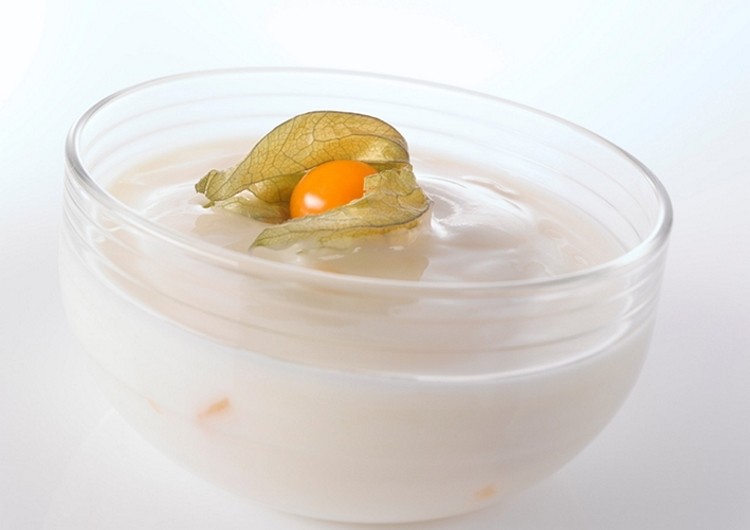Delivering the cells of probiotic success

Cell count is the critical yardstick for measuring whether a probiotic dairy product is on target to deliver the promised dose of live bacteria. Even more important for manufacturers is the matter of the delivery itself. How do you guarantee the right cell count of a specific probiotic strain when a complex array of variables could get in the way?
The simple theory is to add buddy bacteria that can help them along. The reality, though, is way more complicated. Because, when it comes down to it, the task of identifying those buddies and how they interact boils down to experience – and lots of it.
The dual challenge
Dr Arthur Ouwehand, technical fellow at DuPont Nutrition & Biosciences, puts the challenge into perspective.
“First, manufacturers have to select a probiotic strain that they know can survive in their fermented dairy product. Secondly, they may spend months on finding the recipe that will enable them to achieve their target cell count and deliver the associated health benefit. So, they may need help to speed up their development time,” Ouwehand said.
In view of current probiotic trends, a faster time to market is worth the effort. From 2019 to 2023, Euromonitor expects global probiotic dairy sales to grow more than 33% – a considerable escalation compared to previous years. That excludes the rising demand for probiotic dairy alternatives. Consumer awareness of digestive and immune health is the key driver.
“When you work with probiotics, you need to use the synergy between organisms. And you need to appreciate the many factors that affect the growth and efficacy of the probiotic – plus the quality and palatability of the final dairy product,” Ouwehand added.
So where to start?
Essential interactions
The fact is scientists have investigated the interactions between starter and probiotic cultures in fermented dairy products for years. In yogurt production, for example, it is well known that the interaction between starter cultures – typically Streptococcus thermophilus and Lactobacillus bulgaricus – is essential to fermentation yield and sensory profile, including achieving the mild flavour that many consumers today prefer.
Due to their warmth-loving nature and ability to liberate glucose and galactose from the lactose in milk, Ouwehand explained how these starter cultures can be the ‘best buddies’ probiotics need to live and grow.
“The starter cultures used in yoghurt production may create an environment where the probiotic can multiply many times over. This growth slows as soon as yoghurts are put into chilled storage. The post-acidification is then reduced, maintaining the mild flavor of the yogurt – and preventing the probiotic cell count from dropping too quickly.
“However, not all starters are created equal. It takes experience to know which strains provide the best results.”
Over the years, experts in dairy fermentation have built similar knowledge about how starter cultures and probiotic strains interact in many other popular dairy products, skyr and Greek-style yogurt included – also where fruit and other flavourings are added. In the production of some concentrated dairy products, a process alteration may be necessary to ensure the highest possible rate of probiotic survival.
Towards dairy alternatives
For many dairy manufacturers, the consumer trend towards more plant-based foods in the diet is creating new opportunities within probiotic dairy alternatives, which they are keen to explore.
Eve Martinet-Bareau, global product manager for dairy probiotics at DuPont, says this is an area where she experiences a growing number of requests for application support.
“Probiotics add an extra benefit to dairy alternatives based on soya or oat, for instance. We have seen good examples where bacterial species commonly used in yogurt production also work with a probiotic strain in a plant-based formulation,” Martinet-Bareau said.
“Another species with good potential in dairy alternatives is Lactobacillus plantarum, which is known to thrive both in fermented plant materials and the human digestive tract. In other words, it may provide probiotic benefits as well as facilitate fermentation.”
The primary focus for the time-being is on the culture’s functionality. Compared to other starter cultures, L. plantarum has the ability to speed up fermentation in dairy alternative production. The liberation of mono- and disaccharides from plant oligosaccharides during the process contributes to a flavour profile that many consumers enjoy and may improve digestibility.
“We believe L. plantarum could be the key to new synergies with probiotic strains in the dairy alternative arena. The fact that it may double up as a starter culture and probiotic is a possibility that we are currently investigating at DuPont,” Martinet-Bareau said.
Knowledge resources
Whether working with traditional fermented dairy products or new dairy alternatives, establishing and maintaining the probiotic cell count can be a challenge for even the most experienced. For those who seek answers, Ouwehand refers to the fifth edition of the ‘Lactic Acid Bacteria’ handbook 1, which he co-edited in 2019.
“Those who want dig into it and find out how it’s done soon discover that not much has been written about it. In the handbook, experts in the field have tried to share some of their knowledge about the key bacteria strains used in fermented dairy. The best option for manufacturers, though, will always be to seek out fermentation experts who can provide guidance and speed up the development process,” he said.
1Vinderola G, Ouwehand A, Salminen S, von Wright A. (2019). Lactic Acid Bacteria: Microbiological and Functional Aspects. 5th edition, CRC Press, Florida





